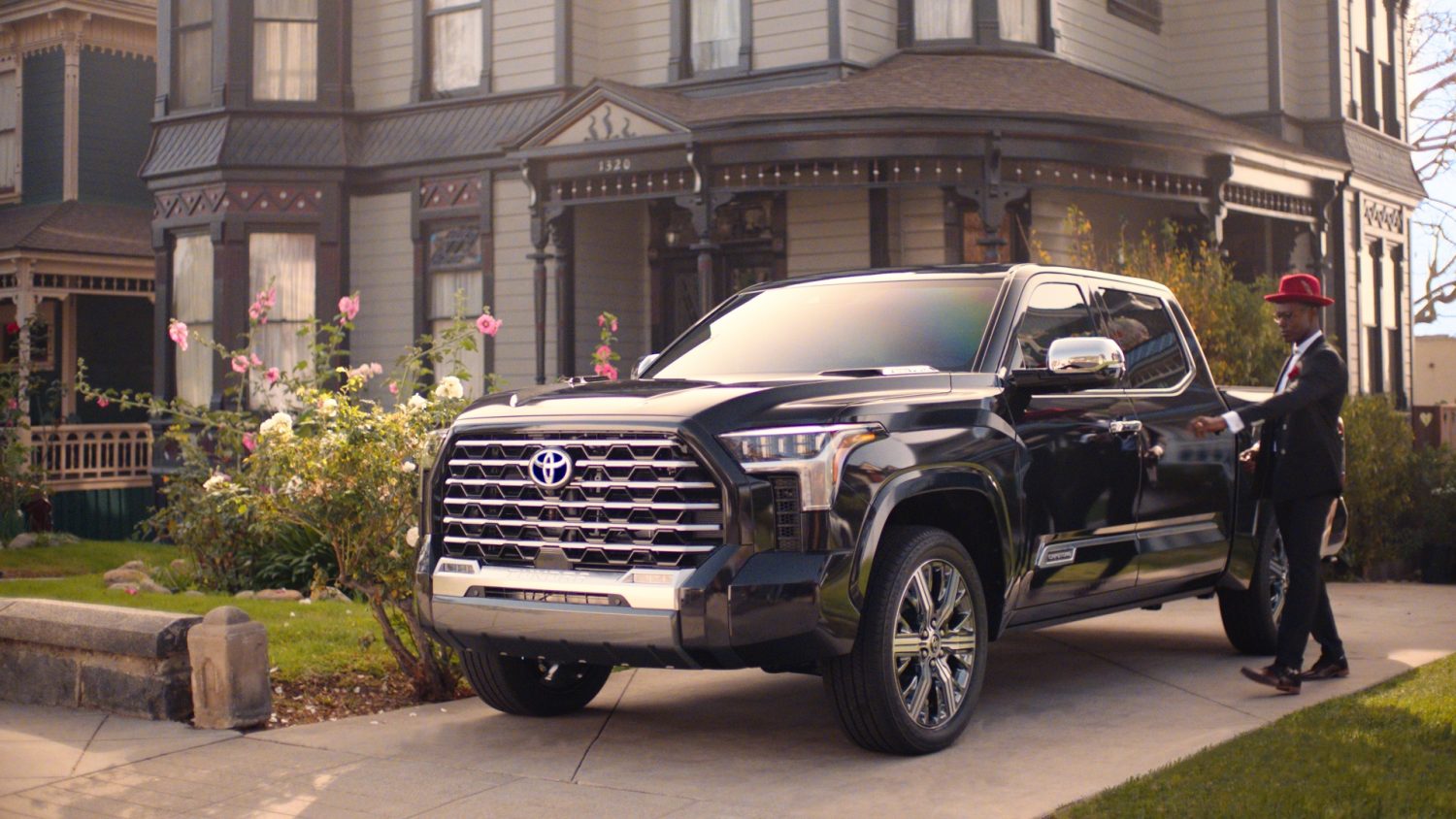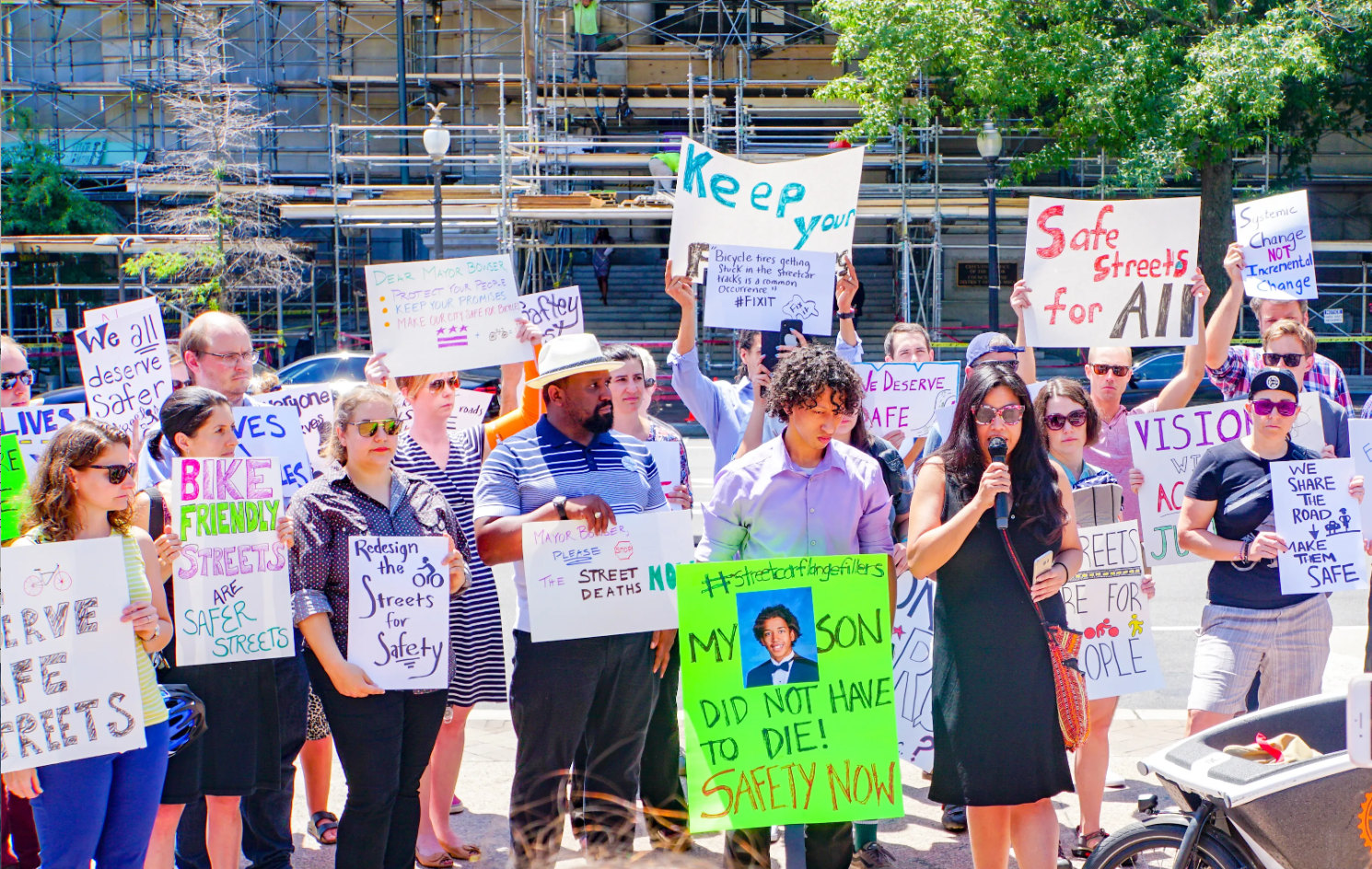The all-new Tundra Capstone, the $75,000 flagship pickup from Toyota, is arriving this Spring along with their other iForce MAX hybrids. It’s a twin-turbocharged 3.4 liter V-6 hybrid engine with 437 HP and 583 pound-feet of torque, has towing capabilities of 10,340 pounds and a max payload of 1,485 pounds, apparently just the right amount of class, style and raw aggression as some have said…
You might imagine that Toyota would promote this truck with mud-splattered shots of it being driven off-road and over rough terrain, hauling massive loads, or taking a large family (and all its possessions, too) to a mountaintop retreat.
But this time, you'd be wrong.
Apparently, Toyota has finally realized that there are only so many buyers in the market that require this type of size and capability for functional purposes. Enter the new Tundra ad, "Cappuccino," the automaker's clear effort at repositioning pickup trucks for the glam set.
First, watch it here:
We open on one of the most stylish men I’ve ever seen getting ready at home then stepping into his Tundra and rolling through empty downtown streets (of course) to arrive at his destination, a human-scaled Paris-style outdoor café, where he magically finds a spot right out front.
His friends, already seated at the table, are in awe of the now-even-more-behemoth-looking truck.
“I see somebody stepped his game up,” one of them says.
"Game? Over," the driver responds — a perfect irony, given that far too many people have been affected and devastated by the increasing size, presence and our culture’s total reverence and prioritization of the automobile.
Still, an off-camera voiceover intones, “The Tundra — made for grand entrances.”

The end frame is a hero shot of the Tundra, which of course is blocking out most of the quaint café due to its ridiculous size. But the truly absurd highlight for me is the lone bicycle situated next to the café, (a laughable prop in a truck ad) priceless art direction to help slowly shift the perception of the pickup truck. It’s very subtle but an important visual cue to the strategic approach. We're now rebranding and retrofitting large trucks into typically smaller scale human-centric spaces by leveraging the very imagery (small cafes/bikes/downtown locations) that car and truck dominance have been slowly destroying for the last half a century.
The devastation has now come full circle.
What’s interesting here is that there are really no features shown at all, no specs, no payloads, no dirt, no towing. It’s a full brand spot just to sell the repositioning — a high-level attempt to connect large trucks to a different lifestyle than what they were originally intended for and to a demographic that may not have had a large pickup truck on their vehicle consideration list.
A good way to contextualize this shift is imagine if we swapped out the truck in this ad for a sedan or luxury car, the ad still works and it wouldn’t feel out of place. Part of what makes this branding so ridiculous is that in the mainstream discussion, cycling often gets positioned as an elitist mode of transportation and inversely the pickup truck as the vehicle for regular hard workin’ Americans. It's bizarre that a $75,000 vehicle to go get a cappuccino downtown is for those salt of the earth folks but the $200 bicycle for the daily commute is for the privileged few — one hell of a sell job if you ask me.
Earlier in my professional life, I worked in advertising — and was part of the team that launched the Tundra in 2008. Our strategic focus at that time was on the trades, outdoor and agricultural targets and positioned the creative as tough and rugged workhorses (nothing new) but there was never a thought to pursue an approach for city life or positioning the vehicle outside of its core capabilities, functions, and traditional uses. This was 15 years ago; the landscape is quite different now.
I get it that times and tastes change and I’m aware that this specific truck is more about luxury than grit and toughness, getting the “Lexus truck” label from reviewers and journalists alike.
But the bigger issue is that the auto makers are normalizing these behemoths for all uses and completely blurring the lines between a practical work truck and a vehicle for everyday use. The results are that the size and power that were once needed for true functionality are being sold to a large portion of the population who have no use for it — it’s an arms race fueled by corporate greed to one up the competition and service the insatiable appetite by a culture they meticulously created. Since 2000, according to Consumer Reports, hood heights have increased by 11 percent and vehicle weights by 20 percents which play a critical role in both visibility and impact when it comes to collisions, especially with pedestrians, youth and seniors.
So these large vehicles once meant solely for heavy duty are getting even bigger and deadlier — yet being marketed to everyone everywhere, even in tight urban centers. The top-three selling vehicles in the U.S. last year were the F-Series, Dodge Ram and Chevrolet Silverado which is just reflective of the overall trend in larger sized vehicle popularity. In 2012, five of the top 10 vehicles were trucks/SUV’s, in 2021 that number was eight.
In a time when we should be decreasing traffic, volume and the footprint of our vehicles to reintroduce more human scale movement to help address this climate emergency and the 40,000 deaths on our roads, these supersized vehicles being normalized are doing the exact opposite.
Yes, there are those who need pickup trucks and larger vehicles for functional reasons. The problem is that’s not only who the auto manufacturers are selling to and in turn who are buying.
This is a strategic move to build these trucks for a purpose that will never be practiced and sadly on our streets when it’s game over, there’s no reset button.
Tom Flood worked in advertising for many years in Toronto but has most recently been developing strategy and creative through Rovélo Creative and giving lectures and workshops around framing and language as it applies to AT/Road Safety and Road Violence. Follow him on Twitter @tomflood1.






